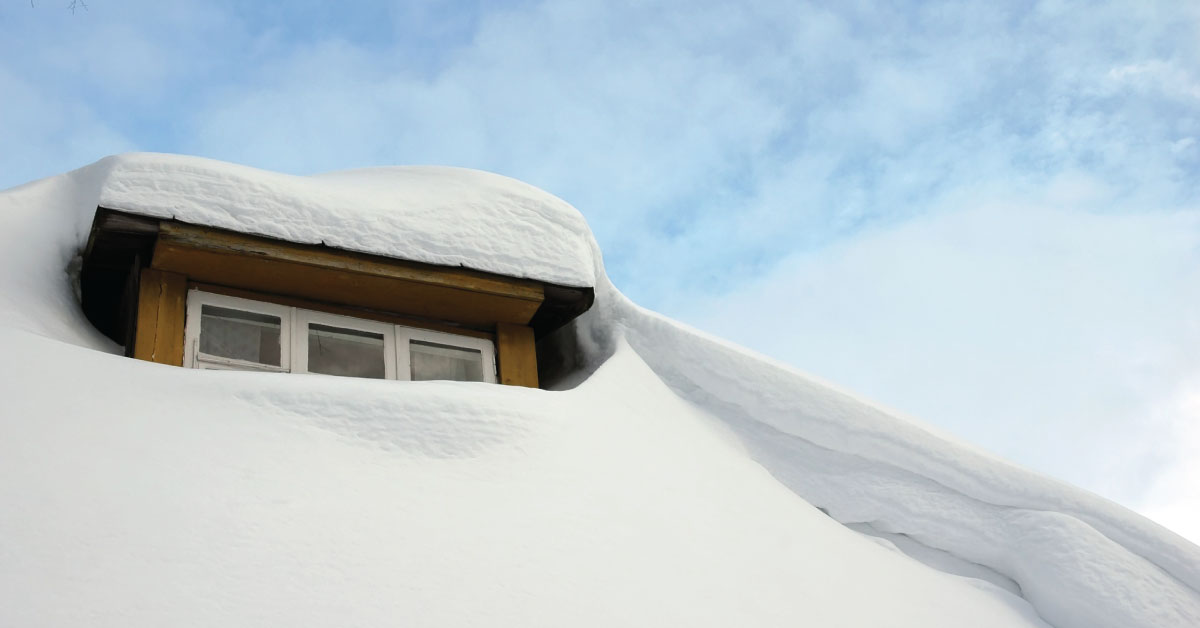
12 Dec Snow on the roof? Do you know when to intervene?

Last year’s record snowfall amounts forced many building owners to hire contractors to clear their roofs.
Generally, when the winter conditions are normal, there is no need to worry about clearing the roof because both flat and sloped roofs are, in principle, built to withstand normal snow loads. However, you do need to be more vigilant when snow accumulations are unusually high. Especially during periods of late season thaw, or a period of freezing rain.
Under those conditions, snow loads will be considerably heavier, and ice may form, impeding the normal draining of your roof.
The warning signs
How to know if your roof is at risk? Pay particular attention to warning signs such as:
- unusual cracking sounds
- warping of a ceiling
- cracks appearing in wall and ceiling plaster
- doors starting to jam
Tips for clearing your roof
- First of all, you should always leave this task to a roofing specialist who has the required skills, experience and equipment to avoid the risk of falls or even electrocution.
- Otherwise, make sure to use wooden or plastic tools (nothing with sharp points or cutting edges).
- Depending on the type of roof, there may be no need to clear all the snow.
- With a flat roof, you need only make sure the drain is clear and then open drainage paths that converge toward it.
- On a sloped roof, make drainage paths to ensure that water can run normally down to roof edges.
In either case, the bottom layer of snow must always be left in place to prevent damage to the waterproofing membrane.
Also, make sure snow doesn’t obstruct the plumbing vents and the roof vents, which on a sloped roof help to ventilate the attic.
Do not forget to clear the snow of the above-ground swimming pool, the Tempo shelter and the recreational vehicle
Above-ground swimming pool
If your pool has disappeared under the snow, it is urgent to take the shovel (plastic) to clear it and protect it from structural breakage or tearing of its canvas. The expansion of water when it freezes can cause irreversible damage to the fabric and some components such as the skimmer.
Always clear snow from the outside to avoid putting weight on the inside and crack the canvas.
Temporary car shelter
The structure of your temporary car shelter is fragile, and the wall is malleable. As a result, the shelter can support very little weight. To avoid having it collapse on your car, it is important to clear the snow from it using a broom with extensible handle.
Recreational vehicle
An RV roof clogged with snow and ice, even if it does not collapse, could allow water to seep in, causing several thousand dollars of damage.
If the damage is not always apparent, water trapped in the insulation can quickly create dry rot, delamination or the formation of mold and fungi. As rubber membrane roofs can tear easily, you must use a plastic shovel to clear the snow. Focus on the snow without worrying about the ice because, by breaking it, you risk touching the sealant joints, the ones that prevent leaks. Instead, let the sun take care of the ice.
What about your home insurance?
If you have an all-risks (comprehensive) home insurance policy, it covers the costs resulting from a roof collapse or furniture breakage caused by snow and ice.
As for damage to your home due to water infiltration, it is covered when an endorsement called “Water Damage – Above-Ground Water” is added to the policy. Note that, in the case of an RV, water infiltration is usually not covered. Please refer to the coverage of your policy for the details.
Since rooftop snow or ice accumulation also pose a risk for visitors and their vehicles, it’s also a good idea to have civil liability insurance in case you are sued.
Contact your insurance broker to verify that you have adequate coverage.
Jackie Beaudoin, Leclerc Insurance and Financial Services
Source : CAA



